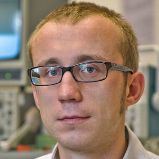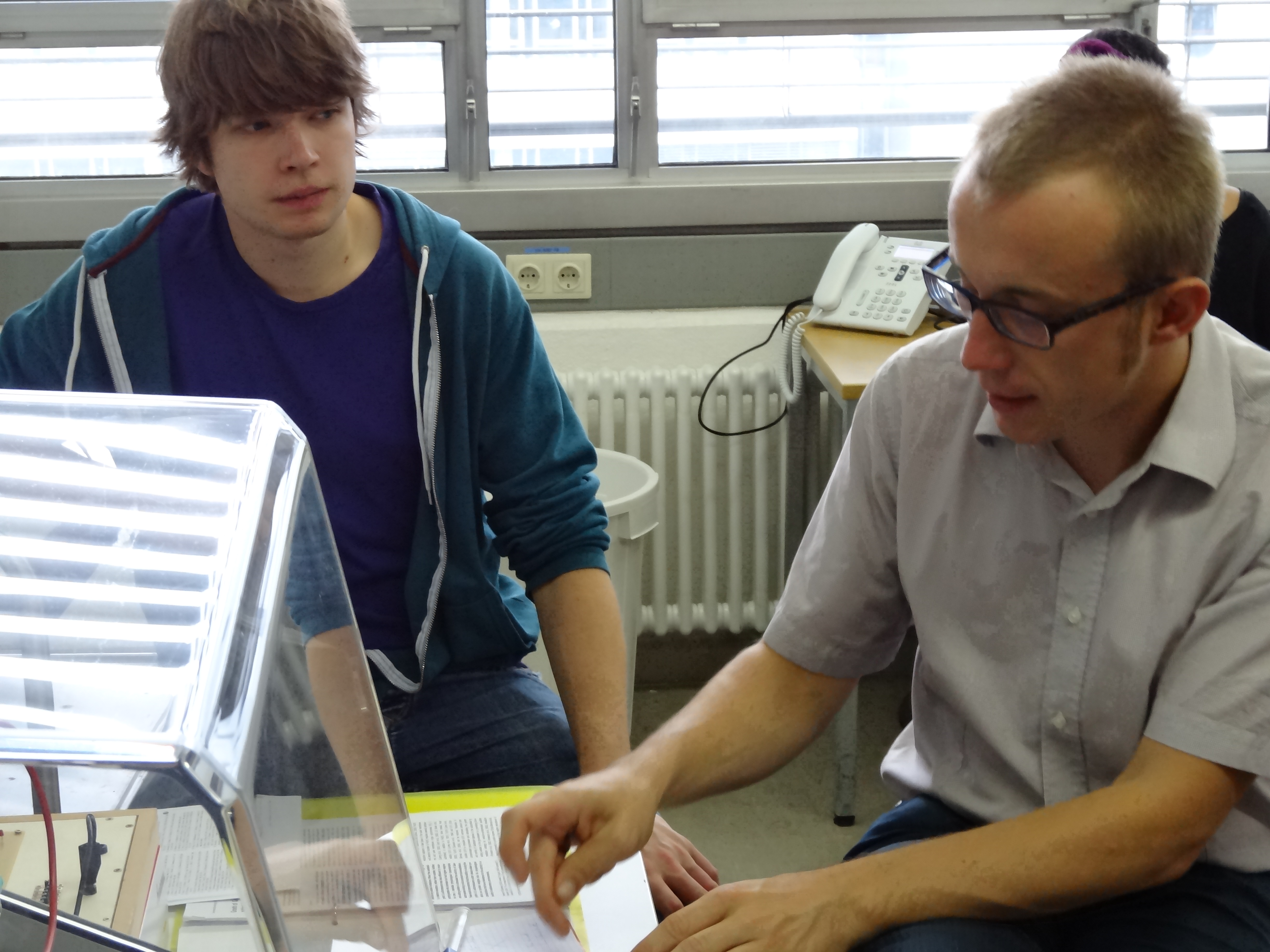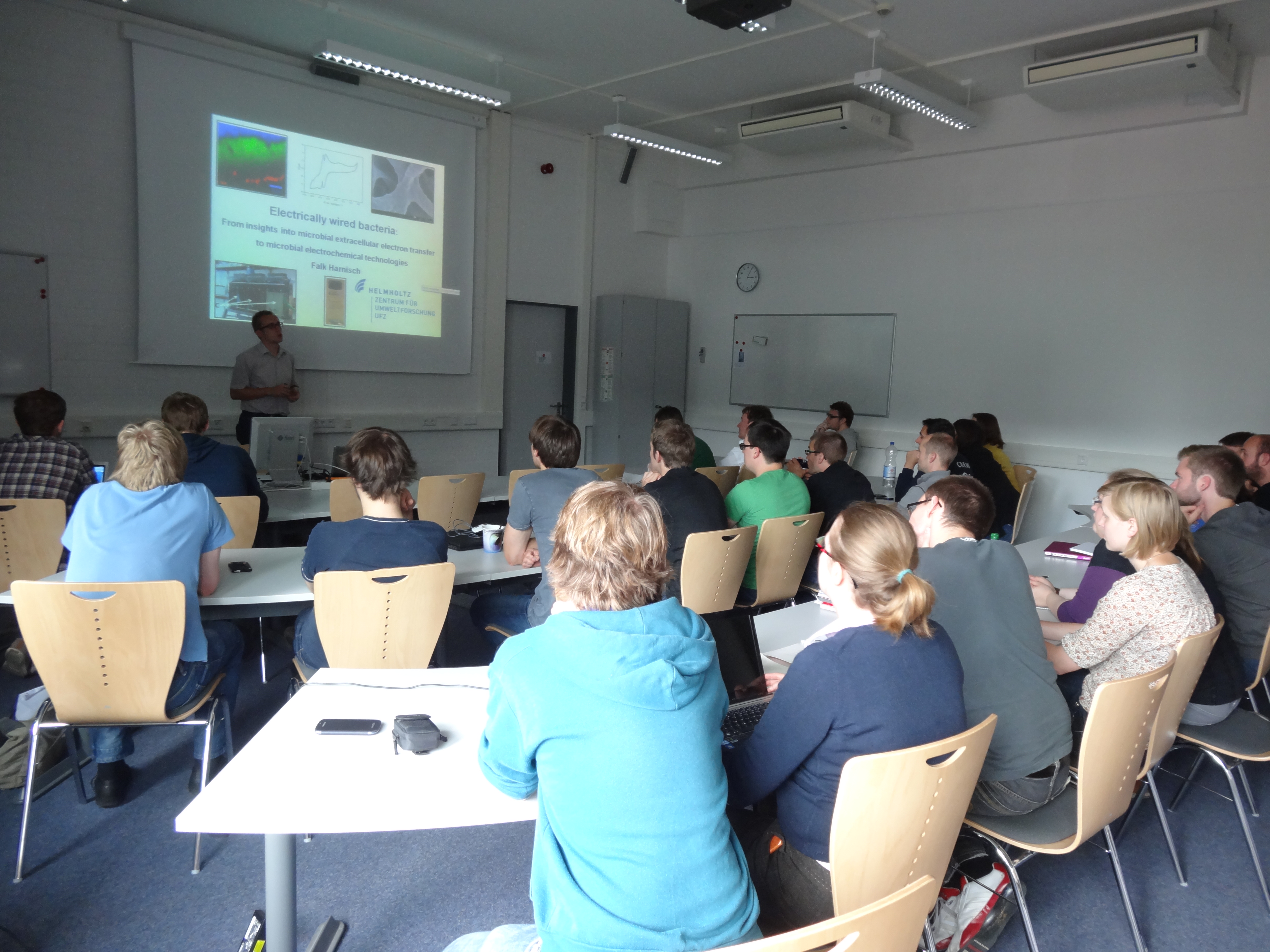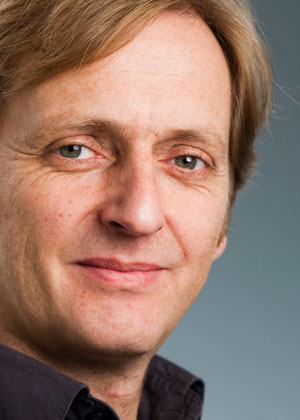Team:Bielefeld-Germany/Human Practice/Experts
From 2013.igem.org
| (One intermediate revision not shown) | |||
| Line 93: | Line 93: | ||
At the congress [https://2013.igem.org/Team:Bielefeld-Germany/Human_Practice/Biotechnology2020%2B Biotechnologie2020+] in Berlin, Germany we met | At the congress [https://2013.igem.org/Team:Bielefeld-Germany/Human_Practice/Biotechnology2020%2B Biotechnologie2020+] in Berlin, Germany we met | ||
[http://www.ufz.de/index.php?de=31006 Dr. Falk Harnisch], an expert in bioelectrocatalysis and bioelectrotechnology, who works at the department of environmental microbiology at the [http://www.ufz.de/index.php?en=11382 Helmholtz-Zentrum for environmental research] in Leipzig, Germany. He is the supervisor of the research group for microbial biocatalysis and bioelectrotechnology. | [http://www.ufz.de/index.php?de=31006 Dr. Falk Harnisch], an expert in bioelectrocatalysis and bioelectrotechnology, who works at the department of environmental microbiology at the [http://www.ufz.de/index.php?en=11382 Helmholtz-Zentrum for environmental research] in Leipzig, Germany. He is the supervisor of the research group for microbial biocatalysis and bioelectrotechnology. | ||
| - | + | <br> | |
On October 8th we interviewed him via Skype. After a short discussion about our Microbial Fuel Cell (MFC) at the beginning, where we figured out that the most difficult part of the MFC is the transfer of the electrons through the cell membrane and the oxidation of the mediator at the anode as well and the toxicity of some mediators. After this short introduction we asked him specific questions about our project: | On October 8th we interviewed him via Skype. After a short discussion about our Microbial Fuel Cell (MFC) at the beginning, where we figured out that the most difficult part of the MFC is the transfer of the electrons through the cell membrane and the oxidation of the mediator at the anode as well and the toxicity of some mediators. After this short introduction we asked him specific questions about our project: | ||
</p> | </p> | ||
| Line 218: | Line 218: | ||
<p align="justify"> | <p align="justify"> | ||
The feedback we received following our successful appearance at the European Jamboree made it clear to us that we had to gain more expert opinions regarding the future applicability of our MFC. Searching for companies with a deep knowledge in the field of usage and distribution of renewable energies, we found out about [http://energiezukunftschweiz.ch Energie Zukunft Schweiz] (Energy future Switzerland). The Swiss company is partner of several organizations and energy providers that want to facilitate the production of renewable energies and try to raise their energy efficiency. The EZS also acts as an agent between these institutions and communities that are interested in the usage of renewable energies. All of this is performed under consideration of economic aspects. | The feedback we received following our successful appearance at the European Jamboree made it clear to us that we had to gain more expert opinions regarding the future applicability of our MFC. Searching for companies with a deep knowledge in the field of usage and distribution of renewable energies, we found out about [http://energiezukunftschweiz.ch Energie Zukunft Schweiz] (Energy future Switzerland). The Swiss company is partner of several organizations and energy providers that want to facilitate the production of renewable energies and try to raise their energy efficiency. The EZS also acts as an agent between these institutions and communities that are interested in the usage of renewable energies. All of this is performed under consideration of economic aspects. | ||
| - | + | <br> | |
Aeneas Wanner is the general manager of Energie Zukunft Schweiz since 2006. Beforehand he was the driving force behind the climate protection organization [http://myclimate.org myclimate]. Besides his appointment at EZS, he also works as an academic at the ETH Zurich and the technical college St. Gallen and is a member of the parliament of Basel for the [http://www.bs.grunliberale.ch/personen_detail.php?id=155 green-liberal party]. | Aeneas Wanner is the general manager of Energie Zukunft Schweiz since 2006. Beforehand he was the driving force behind the climate protection organization [http://myclimate.org myclimate]. Besides his appointment at EZS, he also works as an academic at the ETH Zurich and the technical college St. Gallen and is a member of the parliament of Basel for the [http://www.bs.grunliberale.ch/personen_detail.php?id=155 green-liberal party]. | ||
</p> | </p> | ||
Latest revision as of 23:02, 28 October 2013
Experts
Overview
To enable an efficient project development, it is essential to regularly talk with experts. These give insights regarding actual requirements on the specific area of expertise. In addition the permanent consolidation of experts during the project development process, it is useful to obtain an assessment at the end of the project, in order to assess aspects such as efficiency, future opportunities and biosecurity. Therefore, we consolidated several experts to evaluate our project. Dr. Falk Harnisch was our permanent expert who helped us especially with the engineering aspects and mediators. For the project assessment we consulted Dr. Arnold Sauter and Dipl. Environmental Scientist Aeneas Wanner.
Dr. Falk Harnisch
Introduction
At the congress Biotechnologie2020+ in Berlin, Germany we met
[http://www.ufz.de/index.php?de=31006 Dr. Falk Harnisch], an expert in bioelectrocatalysis and bioelectrotechnology, who works at the department of environmental microbiology at the [http://www.ufz.de/index.php?en=11382 Helmholtz-Zentrum for environmental research] in Leipzig, Germany. He is the supervisor of the research group for microbial biocatalysis and bioelectrotechnology.
On October 8th we interviewed him via Skype. After a short discussion about our Microbial Fuel Cell (MFC) at the beginning, where we figured out that the most difficult part of the MFC is the transfer of the electrons through the cell membrane and the oxidation of the mediator at the anode as well and the toxicity of some mediators. After this short introduction we asked him specific questions about our project:
Skype-Interview
How do you assess the chances of expressing a conductive pilus in E. coli? What are the difficulties?
In the short time you have to work at your project it is very difficult to express a conductive pilus in E. coli. Especially, since the structural proteins have not yet been clearly analyzed which genes are responsible for the pilus and his conductivity, so it isn’t easy to work with it. If you reach your goal it would be a great scientific success. It is very interesting to express this pilus of G. sulfurreducens in E. coli because it has got the highest electron-transfer-constant so it would be very effective.
Do you think that cloning of the pilus from Geobacter sulfurreducens into E. coli causes safety issues?
It is commonly known that pili of E. coli cause human disease. The strain which you are working with is a safety strain without these dangerous pili. In my opinion there doesn’t exist the problem because of the fact that the genes of the pilus would come from G. sulfurreducens, which isn’t associated with disease, but with transferring electrons.
We want to use the mtrCAB cluster from Shewanella oneidensis to increase the electron transfer through the bacteria membrane to the anode. What do you think about this idea?
Generally it is a good one. The advantage of the mtrCAB cluster from S. oneidensis is better related to E. coli then the cluster from Geobacter sulfurreducens, but the negative aspect of this idea is that the mtrCAB cluster only has a low electron transfer constant. This means that in comparison to the transfer via mediators or direct transfer via pili the electrons need more time to get through this tunnel-like protein. It could be problematic to get the proteins into the membrane in correct orientation. This problem can be solved by anaerobic coexpression of the ccm-cluster. The idea is challenging but practicable.
Another aspect of our project is to express porines through which our mediators can get through. What do you think about this?
This is also an interesting approach. I am very interested in wether this will work, because it could be a great challenge to improve the reduction of the mediator in the bacteria. But it is very important to pay attention that the potential of the membrane is not too low. This is the most important aspect that you have to look at.
We are also developing a MFC for our engineered E. coli. Does there exist any important rules we have to follow for example regarding the size of the MFC?
You have to minimize the distance between the different parts in your MFC. Every distance is a resistor and will decrease your demand. The optimal size of your MFC depends on the application you want to choose. For testing the principal of your system the actual size of your MFC is good. If you want to get it smaller other problems will appear which you would have to solve. If you want to integrate your system you have to conform it correspondingly.
We have got a special biosafety system including the D-alanine auxotrophic E. coli and the Colicin E2 (at this time we thought that we might use this part from the partsregistry instead of Rnase Ba). Do you think that system is a good one?
The system what you want to use is a good one. In my opinion it is safe and I don’t think that it will be a problem to use it. Another good biosafety idea exists, but it's for Geobacter sulfurreducens. If you would work with this bacteria you could use the aspect that this organism use only one electron acceptor when it is growing under anaerobic conditions. When this organism gets out of the MFC it will die because there wouldn’t be the one electron acceptor which is needed. But as E. coli is facultatively aerobic this system won’t work here, because E. coli has several possibilities to oxidize the substrate.
How do you assess the chance of the MFC in general to take a role in bioremediation and producing energy in the future?
It is a very interesting new idea with a high potential for producing compounds/energy or degradation harmful substances. Many scientists from different fields of knowledge research together. There is much research necessary but in the future it will take a part in different fields. For remediation it would be the best to use mixed culture, while Bacteria as E. coli have the most potential to combine synthesis and energy production. Another challenging aspect would also be to introduce biosynthesis specific with electrons. As you see there is a lot of interesting work to be done and I hope that your project can help to develop the MFC a little bit further.
CeBiTec-Kolloquium
On September 9th we invited Dr. Falk Harnisch to our institution for giving him an impression of how our work goes ahead. All in all he was very satisfied with our ideas after we presented him our state of research. Furthermore we engagingly discussed our MFC-design and how we could optimize it. He observed that our carbon electrodes were well chosen and that potassium ferrocyanide (III) in the cathode chamber is a suitable redox system. We discussed that on both sides of the MFC the pH has to be 7. For example 50mM phosphate buffer can be used to avoid liquid diffusion and potential gradients through the membrane. We debatted that glycerin is a more suitable carbon source than glucose and that it is also a great advantage to use as it is a waste material of biodiesel production. In further discussions, it was possible to develop a protocol for the next experiments. With this we were able to measure how well E. coli can metabolize the different carbon sources, like glycerin, acetate, lactate or glucose, under anaerobic conditions. After applying this screening method without using mediators we will screen these carbon sources of choice with added soluble and insoluble electron acceptors like fumerate in order to analyze the growth rate of E. coli with supplemented mediators.
A low growth rate with an insoluble electron acceptor indicates a not usable mediator, whereas high growth rate shows good extracellular electron transfer by the mediator. Dr. Falk Harnisch gave the hint to test these different screenings primarily outside of the MFC. After finding a good combination of carbon source and mediator the optimal system could be transferred to the MFC.
Impacts on our project
The exchange with Dr. Falk Harnisch had a big impact on our project. Together we discussed different problems about the genetical aspects, for example that the orientation of the mtrCAB cluster in the membrane could be problematic or that the nanowires are too complicated to work with in the short time we have. Especially, since the structural proteins have not yet been clearly analyzed which genes are responsible for the pilus and his conductivity. In addition he answered our questions about the MFC design, which aspects were important for measuring or cultivation. All in all he always was available and willing to answer our questions.
Dr. Arnold Sauter
Introduction
To get an expert view on Microbial Fuel Cells concerning technology assessment, biosafety and the embedment in the current discussions about synthetic biology, we asked [http://www.itas.kit.edu/english/tab_staff_sauter_arnold.php Dr. Arnold Sauter] for his opinion. He is from the [http://www.tab-beim-bundestag.de/en/index.html Office of Technology Assessment at the German Bundestag (TAB)] and the deputy head of the TAB which investigates research on synthetic biology. He has got a long-standing experience in technology assessment for methods and applications of genetic engineering.
The TAB is an independent scientific institution created with the objective of advising the German Bundestag and its committees on matters relating to research and technology.
Since 1990 the TAB has been operated by the Institute for Technology Assessment and Systems Analysis (ITAS) of the Karlsruhe Institute for Technology (KIT), based on a contract with the German Bundestag. TAB´s steering body is the Committee on Education, Research and Technology Assessment.
TAB is a member of the European Parliamentary Technology Assessment (EPTA) Network as well a part of the German language network NTA (Netzwerk TA) (NTA).
Dr. Arnold Sauter's opinion on our project
"Early consideration of biosafety aspects in the development of genetically engineered organisms, especially for all-day applications, is of fundamental importance, even if the technical or economic success cannot be assessed at such an early stage. A combination of physical and biological containment as it is provided for the Microbial Fuel Cell of the iGEM-Team Bielefeld, promises, at least for a batch process, a sufficient safeguard against environmental and health risks. A continuous process, which could be engineered and implemented for example in a waste water treatment, would certainly raise even more fundamental challenges.
Mentioning the biosafety aspect is not only a useful, but even a necessary part of the active presentation of the Bielefeld’s iGEM project to the public. The realization of the Day of Synthetic Biology (Synbioday) in order to establish public awareness seems to be very welcome for the field of research in Synthetic Biology. If possible, similar activities should be intensified. Especially the biosafety aspect should be one of the major topics for public discussion to show the advantages of such systems and to reduce the distrust. From my own experience I know how hard it is to clearly and appropriately communicate the different aspects of research and technology in the early stages.
From the perspective of the policy-advisory Technology Assessment, it is currently a very interesting question if iGEM research activities and public relations may cause, by the commitment of the participating students, an increased interest for biological work and DIY biology, particularly in the non-scientific community. The iGEM-teams inspirit science and they are predestined to motivate people for an active participation in life science.”(citation of Dr. Arnold Sauter)
Impacts on our project
Dr. Arnold Sauter helped us to estimate our project referring the Biosafety aspect. He confirmed our batch system as a system which has sufficient safeguard against environmental and health risks. For eventual future application, for example in waste water treatment plants, we had to engineer a continuous MFC with advanced plant manufacturing. In addition he feels confident that our human practice motivates people for an active participation in life science. This could be possibly increases interest for biological work and DIY biology, particularly in the non-scientific community.
Dipl. Environmental Scientist Aeneas Wanner
Introduction
The feedback we received following our successful appearance at the European Jamboree made it clear to us that we had to gain more expert opinions regarding the future applicability of our MFC. Searching for companies with a deep knowledge in the field of usage and distribution of renewable energies, we found out about [http://energiezukunftschweiz.ch Energie Zukunft Schweiz] (Energy future Switzerland). The Swiss company is partner of several organizations and energy providers that want to facilitate the production of renewable energies and try to raise their energy efficiency. The EZS also acts as an agent between these institutions and communities that are interested in the usage of renewable energies. All of this is performed under consideration of economic aspects.
Aeneas Wanner is the general manager of Energie Zukunft Schweiz since 2006. Beforehand he was the driving force behind the climate protection organization [http://myclimate.org myclimate]. Besides his appointment at EZS, he also works as an academic at the ETH Zurich and the technical college St. Gallen and is a member of the parliament of Basel for the [http://www.bs.grunliberale.ch/personen_detail.php?id=155 green-liberal party].
Expert classification of our questions
Can you imagine a “BioBattery” in which bacteria produce energy? How do you assess its acceptance within the general public?
Of course I can imagine such a “BioBattery” and as long as there are no direct impacts like malodor, I foresee little resistance.
Was the idea of producing energy with bacteria ever discussed within your company?
No, we tend to research and evaluate techniques, which are standing just before a broad market acceptance.
We think of the MFC as a device that can supply small and medium sized energy-dependant equipment. Is there a market for this kind of renewable direct energy supply?
This might prove to be problematic, from which I can say. Even very homogeneous substances (e.g. hydrogen/methane) could not succeed in this dimension.
How efficient are modern methods for energy storage and how much energy is lost during the charging and discharging process (a problem that could be avoided by using an MFC)?
The efficiency of a pumped-storage power station lies around 80%. For lithium-ion accumulators this value is similar, nevertheless the li-ion technology is much more expensive.
Impacts on our project
For us, it is an encouraging sign that an expert like Mr. Wanner, who has insite in practically every field considering renewable energies, has a positive opinion of our ideas. What becomes obvious, is that we really have to try to develop a system that is free of any inconveniences. The biodegradable MFC is a step towards this goal but consecutive improvements have to be made. What helps our intentions, is the entry of seminal devices like 3D-printers in the everyday life of millions of people. This gives us the opportunity to produce an MFC at very low costs, compared to heavy-metal batteries and especially lithium-ion batteries, which are furthermore dependable on declining resources.
Although the market for MFCs is still minor, this does not mean it cannot grow in the next decades. One might consider the use of MFCs as a bioremediation and energy producing tool in wastewater treatment. A development from this purely industrial usage towards our preferred area of application, as a strong counterpart to normal batteries used in households, could be achieved.
The advantages are clear: No toxic wastes and most important no significant loss of energy due to storage conditions. Lithium-ion batteries and pumped-storage power stations can nowadays only achieve an efficiency of 80%. Great efforts are made to raise these values, but a 100% efficiency can never be reached. For MFC´s alike, we definitely have to take this into account. Until MFC´s reach a higher efficiency than batteries there is still a lot of research to do. Nevertheless, it is clear to us, that the possibilities offered by microbial fuel cells are enormous and should be explored thoroughly.
 "
"








